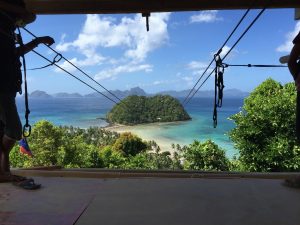Article written by Robert D. Peltz and Carol L. Finklehoffe of Leesfield & Partners Published in the Massachusetts Academy of Trial Attorneys Journal.
The allure of exotic foreign ports and exciting new excursions form the centerpiece of the advertising campaigns of cruise lines, whether in the broadcast, print or electronic media:
• Parasailing in St. Thomas • Zip lining in Costa Rica • Snorkeling in the lagoons of Bermuda • Jungle trekking by ATV in Cozumel • Alpine hiking on Alaskan glaciers • Driving the scenic mountains of Tortola • Learning the secrets of the cooks of Caribbean by visiting local villages in Dominica • Visiting the Mayan ruins at Tulum
Over the past decade, the number of passengers cruising with North America’s largest cruise lines has literally exploded. According to industry figures, the number of passengers has dramatically increased from 9.5 million in 2003 to over 16 million passengers forecasted to cruise in 2012. As the industry itself is quick to admit, at least to its shareholders and tour excursion partners, the continued development of new and existing excursions has played a major role in this growth.
Nevertheless, at the first sign of an excursion gone awry, the cruise lines have been quick to try and disassociate themselves from responsibility for their own creations. In an effort to insulate themselves from liability, the cruise lines have utilized a system of disclaimers, which attempt to hide the true character of their relationships with their tour operating partners. These disclaimers are typically buried in the fine print in the passenger’s ticket of passage and in self-serving statements inserted into the cruise lines’ contract’s with their tour operators.
There is typically a wide divergence, however, between these self-serving statements and the facts on the ground when it comes to describing the cruise lines actual relationship with its excursion partners. Overcoming these inaccurate self-serving and inaccurate descriptions contained in the carrier’s written and electronic materials therefore typically becomes the first order of business.
Click here to read more about out firm’s cruise ship litigation practice
Contrary to these disclaimers, the most accurate description of the relationship between the carrier and its tour operating partners is best characterized by the joint venture. Nevertheless, because of the degree of control maintained by the carrier, various other agency relationships are equally as applicable in most cases. This article will discuss the nature of these various relationships, strategies for holding both the carrier and tour operator responsible for their conduct and the discovery which will be helpful in the process.
Holding the Tour Operator Responsible
Although most of the attention in excursion cases is typically focused on holding the cruise line responsible for its negligence, it is important not to overlook the case against the tour operator. Sometimes, one gets lucky and the tour operator is located in the U.S. Virgin Islands, Puerto Rico or some other domestic location. Most of the time, however, that is not the case. Nevertheless, that is not reason for despair.
Continue reading
 Cruise Ship Lawyers Blog
Cruise Ship Lawyers Blog


 Awful cruise line
Awful cruise line 
